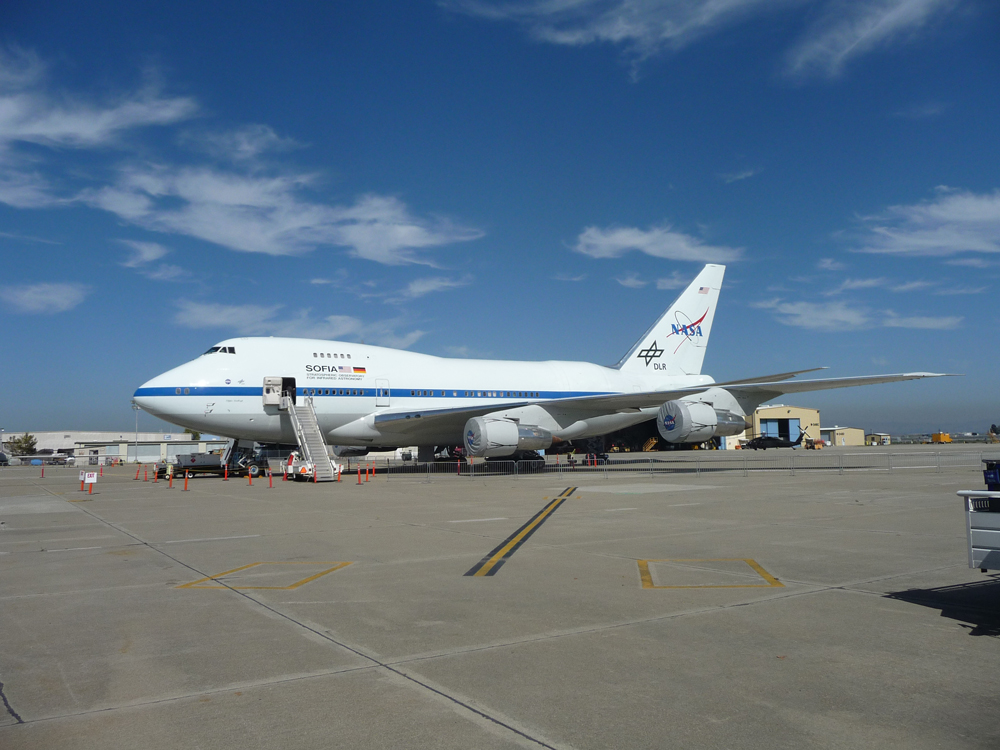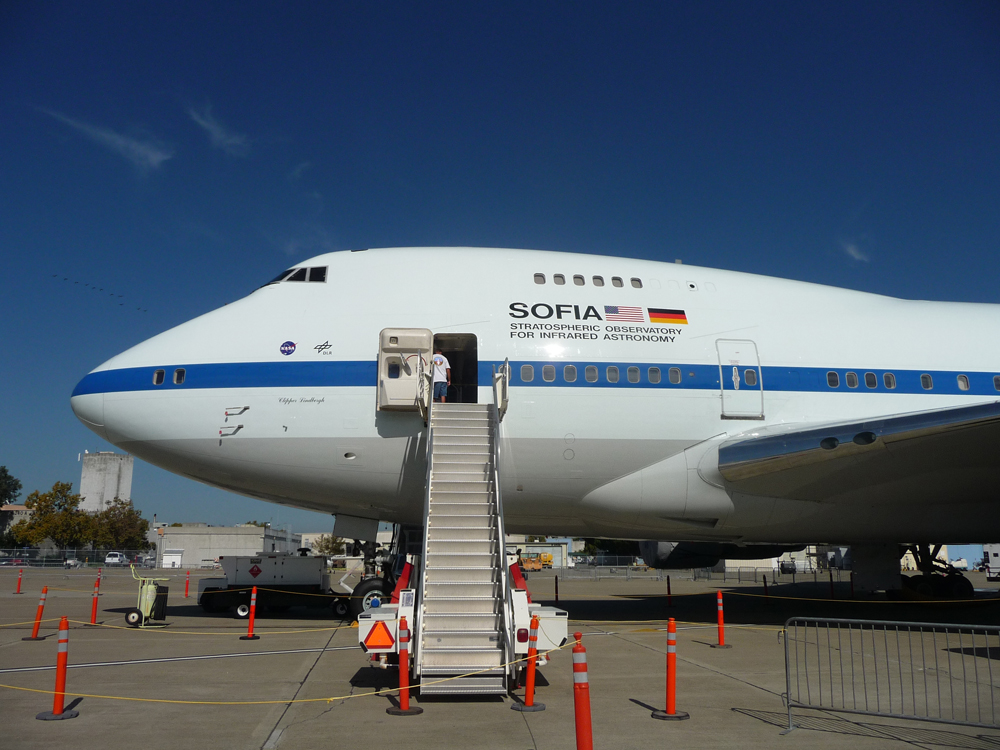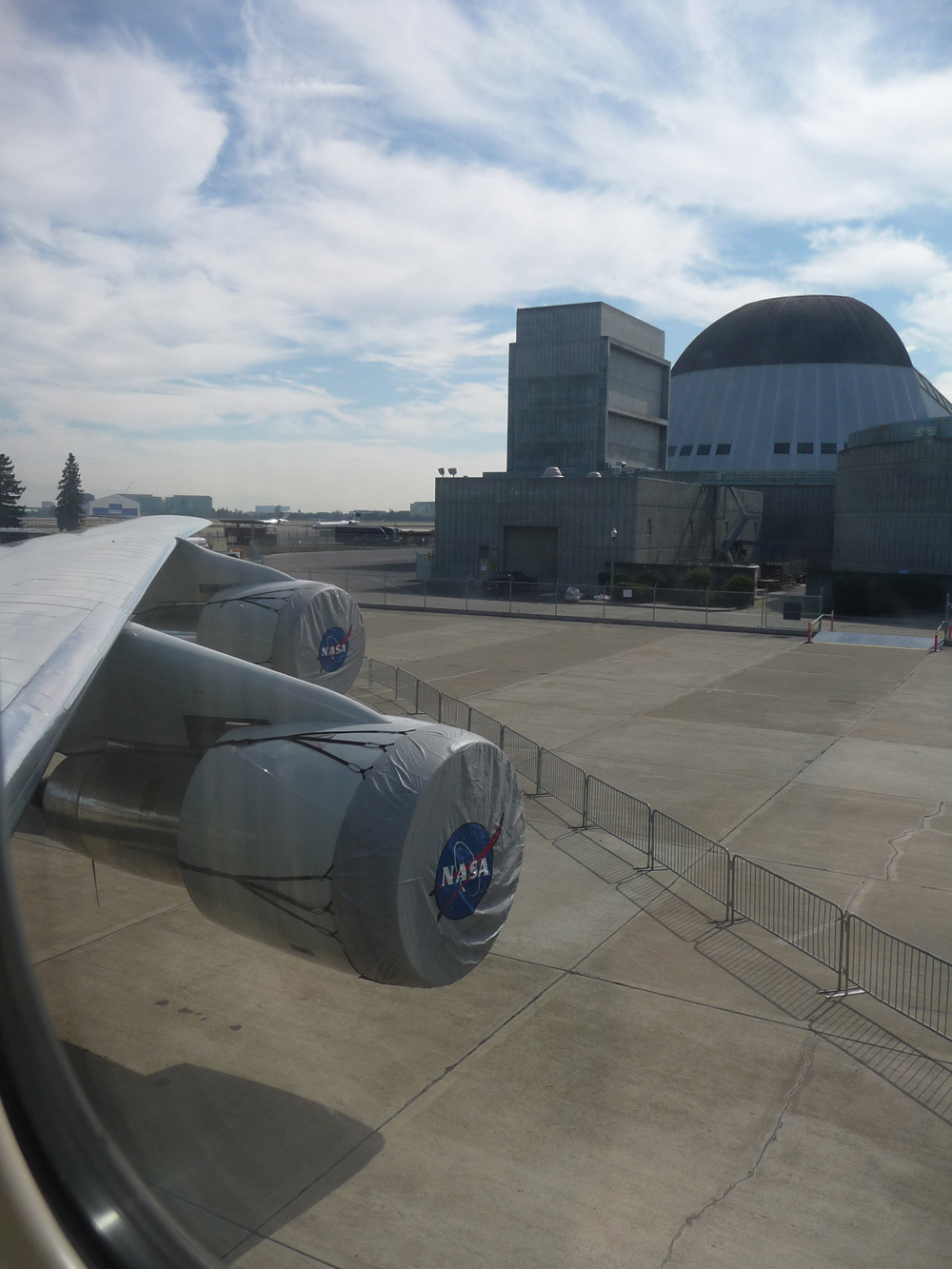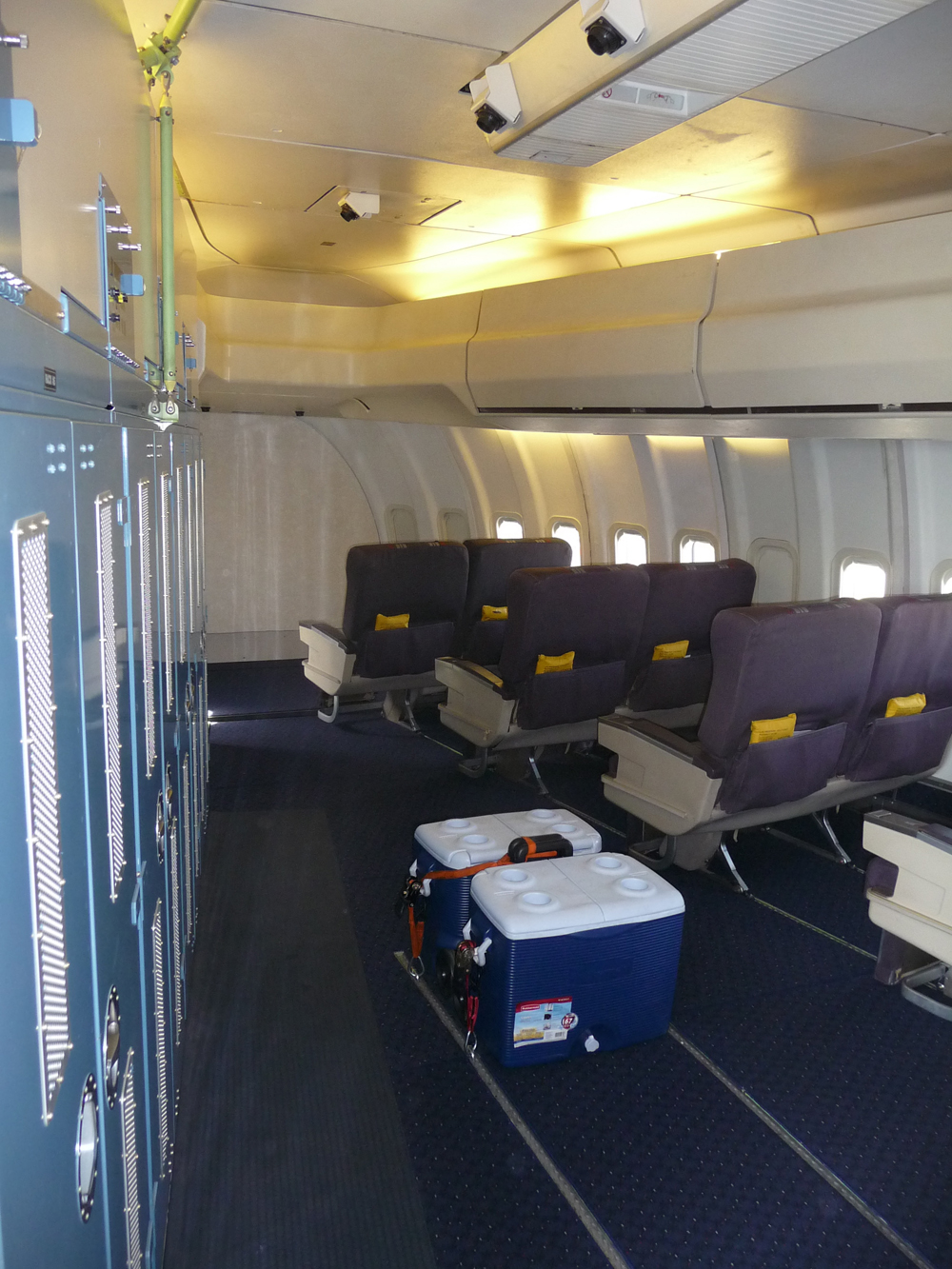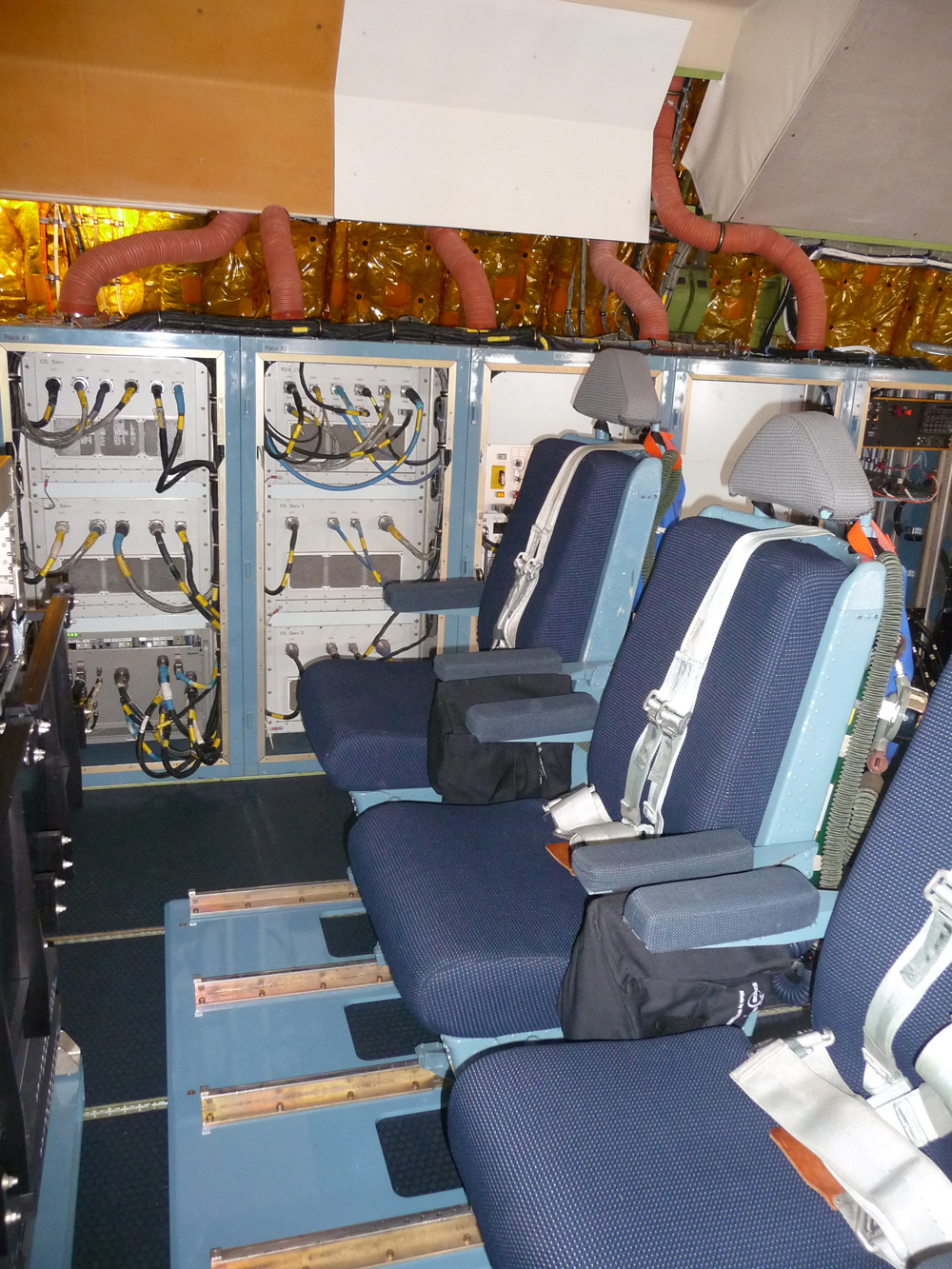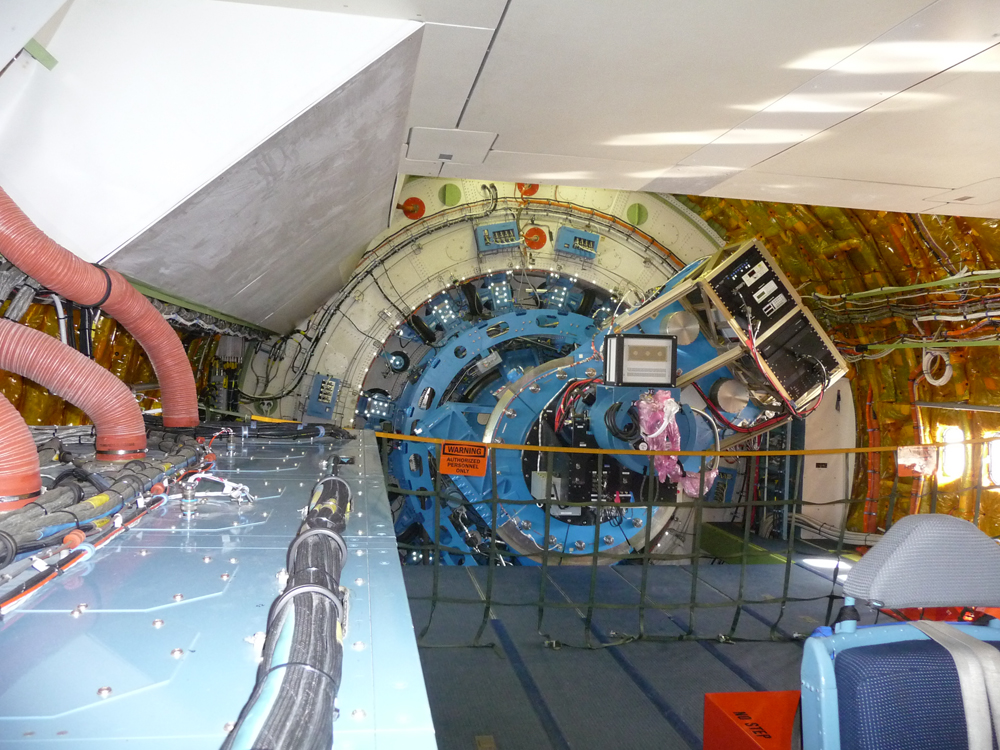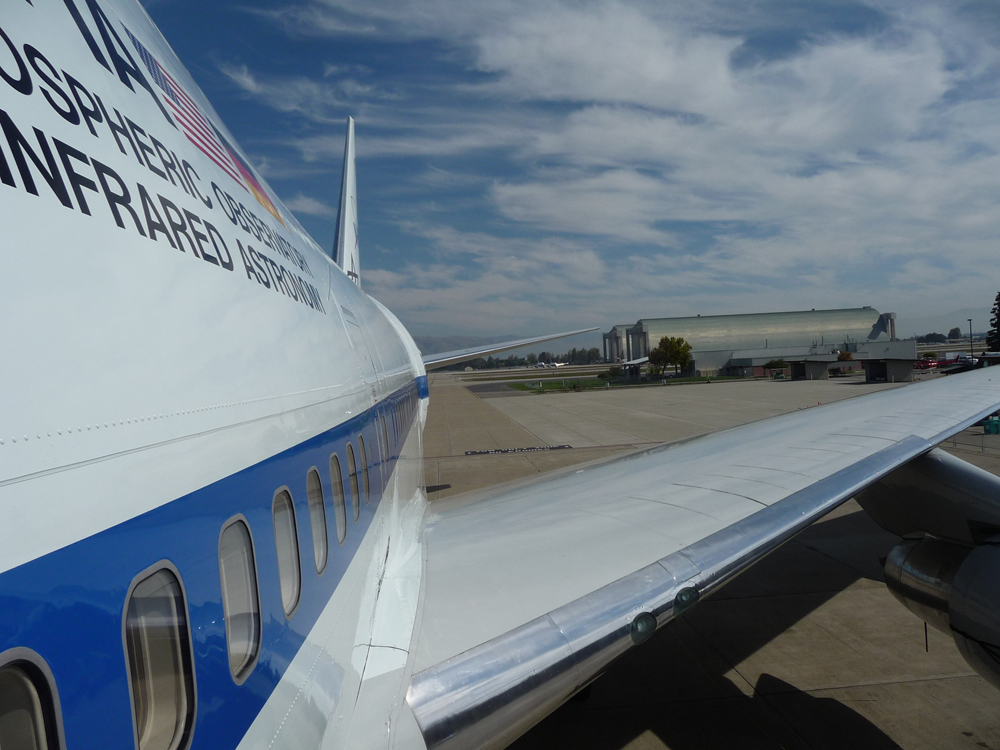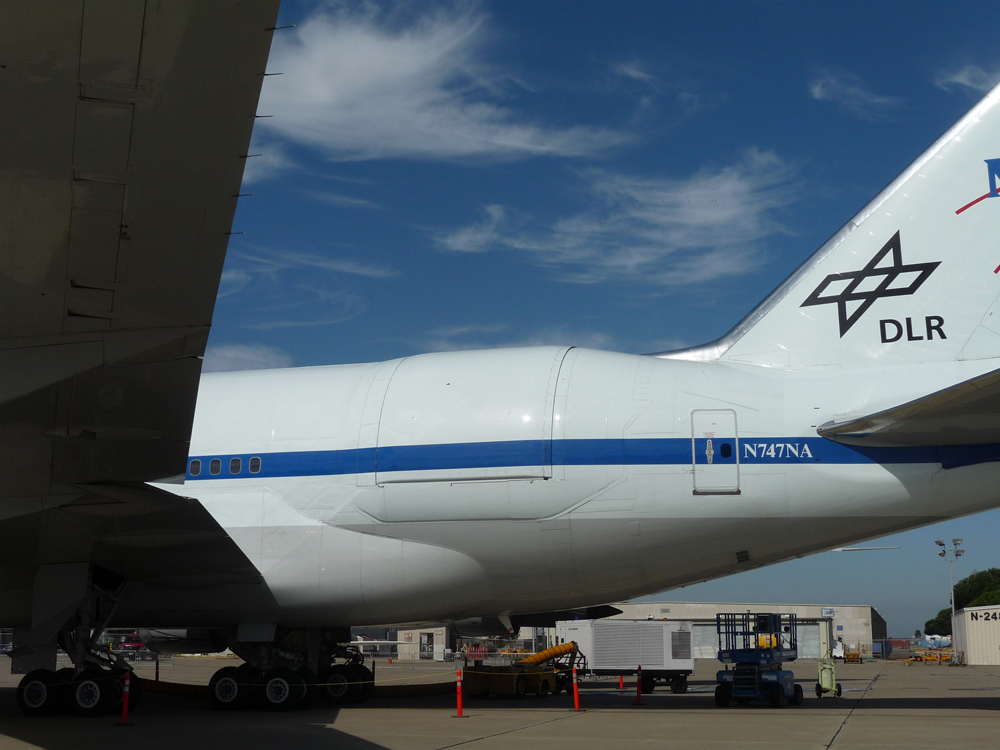Side View of NASA's SOFIA Airborne Observatory
NASA's Ames Research Center let folks tour the SOFIA airborne observatory while the modified 747SP jet was in Silicon Valley in October 2011. SOFIA, a joint project between NASA and the German Aerospace Center, normally resides considerably farther south, at NASA's Dryden Aircraft Operations Facility in Palmdale, Calif.
NASA's SOFIA Observatory, Seen from the Hangar
SOFIA as seen from a hangar at NASA's Ames Research Center in California. SOFIA stands for Stratospheric Observatory For Infrared Astronomy. Researchers plan to use the observatory to investigate star formation, the early universe, black holes and the composition of comets and planetary atmospheres, among other things.
Looking Back at SOFIA and Ames Hangar
SOFIA rested just outside a hangar at Ames, ready to welcome the public aboard.
View Up SOFIA's Steps
A view up the steps of NASA's SOFIA flying observatory. The modified 747SP jet bears the name "Clipper Lindbergh." SOFIA just started flying science missions last year, and astronomers hope to operate it for at least two decades.
Looking out of SOFIA's Window
A view out one of SOFIA's windows, along the port (left) side of the aircraft near the wing.
Educators' Seats aboard SOFIA
Seats near the front of SOFIA's cabin accommodate educators, who take their experiences back to the classroom to teach and inspire students.
Seats Near SOFIA Mission Control
These seats, near SOFIA's "mission control," are occupied by technical personnel when the observatory is flying a mission.
Breaking space news, the latest updates on rocket launches, skywatching events and more!
SOFIA's Science Instruments
A view looking tailward through the cabin of NASA's SOFIA flying observatory. At the back, two science instruments jut from a bulkhead. The instruments are attached to SOFIA's 17-ton telescope, which sits on the other side of the bulkhead.
Close-up of SOFIA Instruments
A close-up of two SOFIA science instruments, FLITECAM and HIPO, which are connected to the telescope on the other side of the bulkhead. Science instruments can be removed and swapped out between flights; the plane usually flies with just one instrument aboard.
Looking Down the Length of SOFIA
A view down the length of SOFIA. The bulge near the tail marks the area where the 17-ton infrared telescope is housed.
SOFIA Telescope's Viewing Window
When SOFIA is aloft, the large door on its left side opens, exposing its 17-ton telescope to the elements and the heavens.
Join our Space Forums to keep talking space on the latest missions, night sky and more! And if you have a news tip, correction or comment, let us know at: community@space.com.

Michael Wall is a Senior Space Writer with Space.com and joined the team in 2010. He primarily covers exoplanets, spaceflight and military space, but has been known to dabble in the space art beat. His book about the search for alien life, "Out There," was published on Nov. 13, 2018. Before becoming a science writer, Michael worked as a herpetologist and wildlife biologist. He has a Ph.D. in evolutionary biology from the University of Sydney, Australia, a bachelor's degree from the University of Arizona, and a graduate certificate in science writing from the University of California, Santa Cruz. To find out what his latest project is, you can follow Michael on Twitter.
